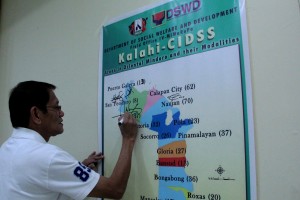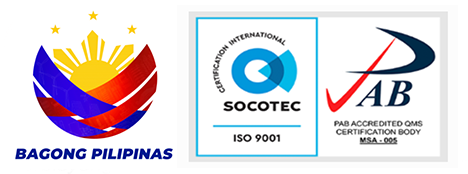Malate, Manila-Thirty seven municipalities across MiMaRoPa participated in the Department of Social Welfare and Development (DSWD) Region MiMaRoPa’s Local Government Units (LGU) Forum, part of the Disaster Response Operation Procedures (DROP) implemented through the Kalahi-CIDSS Program, held at Tagaytay City, February 27. The key milestones achieved in the gathering were the updates on the status of the Kalahi-CIDSS program implementation and setting of targets for year 2015.
The Kapit-Bisig Laban sa Kahirapan- Community Integrated Delivery of Social Services (Kalahi-CIDSS) is a poverty alleviation program of the department that is aimed at improving local governance, providing the community members access to social services, and increasing their participation towards the improvement of their own lives.

“Gains are the experiences of participation and involvement of the communities,” said Hon. Leila M. Arboleda, Looc, Romblon Mayor and champion of Kalahi-CIDSS. Looc, Romblon has implemented 13 community projects in three consecutive years.
“Ang tunay na kapangyarihan ng mamamayan ay nararamdaman ko, nalalasahan ko, nalalasap ko at ito ay may kasaysayan, [The real empowerment of the community is felt and is part of the history]” said Wilma D. Naviamos, Regional Director of DSWD, Region IV-MiMaRoPa, as she speaks for the communities and discusses the intangible results of the Kalahi-CIDSS program especially in the geographically isolated and disadvantaged areas (GIDA) in its 11 years of implementation.
“Yung structures, trophy nila yon, pero yung karanasan nila, nagbago ang pananaw sa sarili at sa kapwa, at may tiwala sa namumuno sa kanila ang nais natin sa programang ito [The structures-community projects- are their trophies but the experience, trust to self and their Local Chief Executives are the desires of the program], she added.

The department also intensifies the impacts of its programs through convergence strategy as discussed in the forum. Through partnership with the LGUs, Civil Society Organizations, and other stakeholders in development, the resources are being maximized, duplication of efforts are reduced at all levels, and processes are being harmonized and synchronized. The department envisions equity wherein no poor will be left behind which could be attained through partnership.
Today, 61 municipalities with 411 members of the Area Coordinating Teams are implementing the program in poor communities and disaster response and rehabilitation to the typhoon Yolanda (Haiyan) affected areas across MiMaRoPa. ###
![]()


